Why write in a nice clean book?
First, don't highlight or write in library or school books. Second, don’t feel obliged to highlight or make notes if you are simply reading a novel for pleasure.
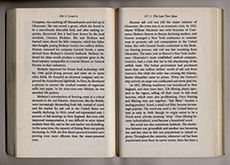
But if you own a book, and really want to own it, to own the brilliant information it contains, it's advantageous to customize it. Studies show that comprehension and retention zoom when you annotate (Latin for "to mark”).
When you write in a book, you are conversing with its author. You're constantly summarizing. Make one sentence out of each page. Ask yourself, “What's the big idea here?”
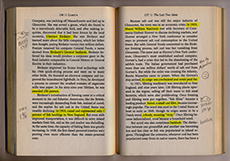
Yellow highlight only the most essential nouns, verbs, and phrases, ones that you might piece together in a sentence that summarizes that page at a glance. Write down key ideas in the side margin (or on the top or bottom, there’s always plenty of room).
Why bother?
Well, there's someone else with whom you are conversing: Your future-self.
Refresh: One minute after reading, you can visually scan a page and "get it."
Remember: One month from now, your retention will be better because of your conscious act of highlighting and commentating.
Revisit: One year from now when you need to find that certain special piece of information, you'll be able to locate it in a jiffy.
Reminisce: Ten years from now you'll have a laugh at your comments and responses and be amazed at how much you have grown (or retrogressed).
Annotating is an art. You improve with practice. Because it’s an art, there are no fixed rules, but here are some tips I have found useful.
Highlighting Tips
Don’t overplant your daffodils. If your pages are more than half yellow, you're missing the point.

Highlight only central concepts, power sentences, key names places, and dates.
If a whole paragraph is kick ass, bracket it in the margins,
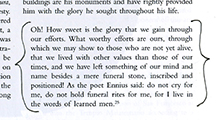
For emphasis, you can then highlight the brackets yellow.
.
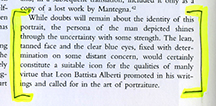
Colors: About 75% of all highlighters are yellow. It provides better contrast with the black type and is able to be photocopied. Some folks like to color-code with orange, pink, and blue highlighters.
Angle of tip: Only use the tip for small lines of type. Use the broad edge 99% of the time. (The Jot and Spot always keeps the broad edge oriented properly, so you spend less time futzing to find it.)
Marginalia Tips
Reading is a two-way street: Assert how you feel about what the author is telling you. Write it in the margin.
Make it pithy: Sum the whole page into one sentence. What is the quintessence here? What is "re-markable”?
What was your immediate reaction (I add an exclamation point for emphasis):
Wow! Great! Cool! Eloquent! Obvious! Idiot! Wrong! Stupido! or even Huh? (if the author’s explanation is too convoluted)
Hey, his reminds me of ____ : Write the connection to something that you read, heard, or dreamed about.
Asterisk it:
Simple asterisk with three short straight lines.

Power asterisk with four straight lines

Shining star with five straight lines (each pointy angle is 36°)

(Limit yourself to a dozen or so asterisks per book and they’ll maintain their sense of importance.)
Make a Smiley Face

(or a Saddy Face)

Use Cyber-slang: LOL, GAL (Get A Life).
Use proofreaders marks: I use a pigtail curlycue , meaning “delete,” for sections of text that don’t pertain to my interests
.
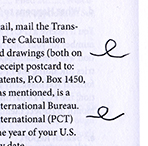
Number: If the author discusses several reasons for his conclusions, number them in the margin.

Arrows: I like to draw long curvy lines, even across gutters, to connect an illustration with its explanation in the text.
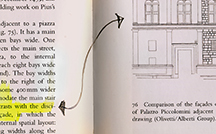
What’s the point: One Renaissance author drew a little pointing hand to highlight what he felt was important. Make up your own “excitement pointer.”

Sketch: Draw quick picture of the character mentioned, where a town is relative to a well-known city, or a doodle that sums up your feelings.
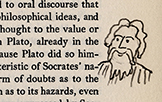
Make a footnote shortcut: if an important footnote is tucked away in the back of the book, write the page you found it on for future "refer-ence."
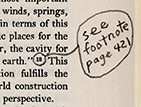
What the heck does “concinnitas” mean? Look up new words and foreign words and write down their definitions on a blank page in the back of the book labeled “Vocabulary.” (It means “a harmonious arrangement”)
Rhetorical devices: In the margins, rewrite sensory words (velvety), onomatopoeia (hiccup), metaphors, similes (like or as), or irony. It will spotlight the author’s cleverness for your later re-amusement.
Your own personal index: When I read a passage truly pertinent to what I've been trying to learn, I can’t contain myself. I quickly flip to the inside back cover, write down the page number and brief phrase summarizing the literary nugget. Once I finish the book, I'll go back and highlight just the most magnificent ones in the list. The essence of the essentials.
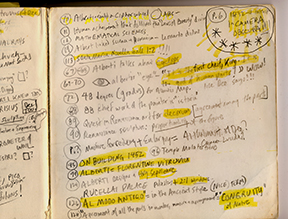
Slow down to soak up: Take the time to artfully annotate and you’ll get more from the text than the casual reader does. Reading is not about speed, it's about how much you absorb. Think turtle, not hare. (To reinforce this “ownership” deal, write your name and date of reading on the inside front cover.)
Conclusions
Make up your own rules, it’s your art form: You are marking the trail you are blazing through the jungle of text. Have fun. Amuse yourself.
Annotation keeps your “reading mind” active. It also allows for swift reviewing. Reviewing increases retention. And retention is wisdom.
Why waste time reading a book if it's not absorbed? Eat your book. Or at least digest it well.